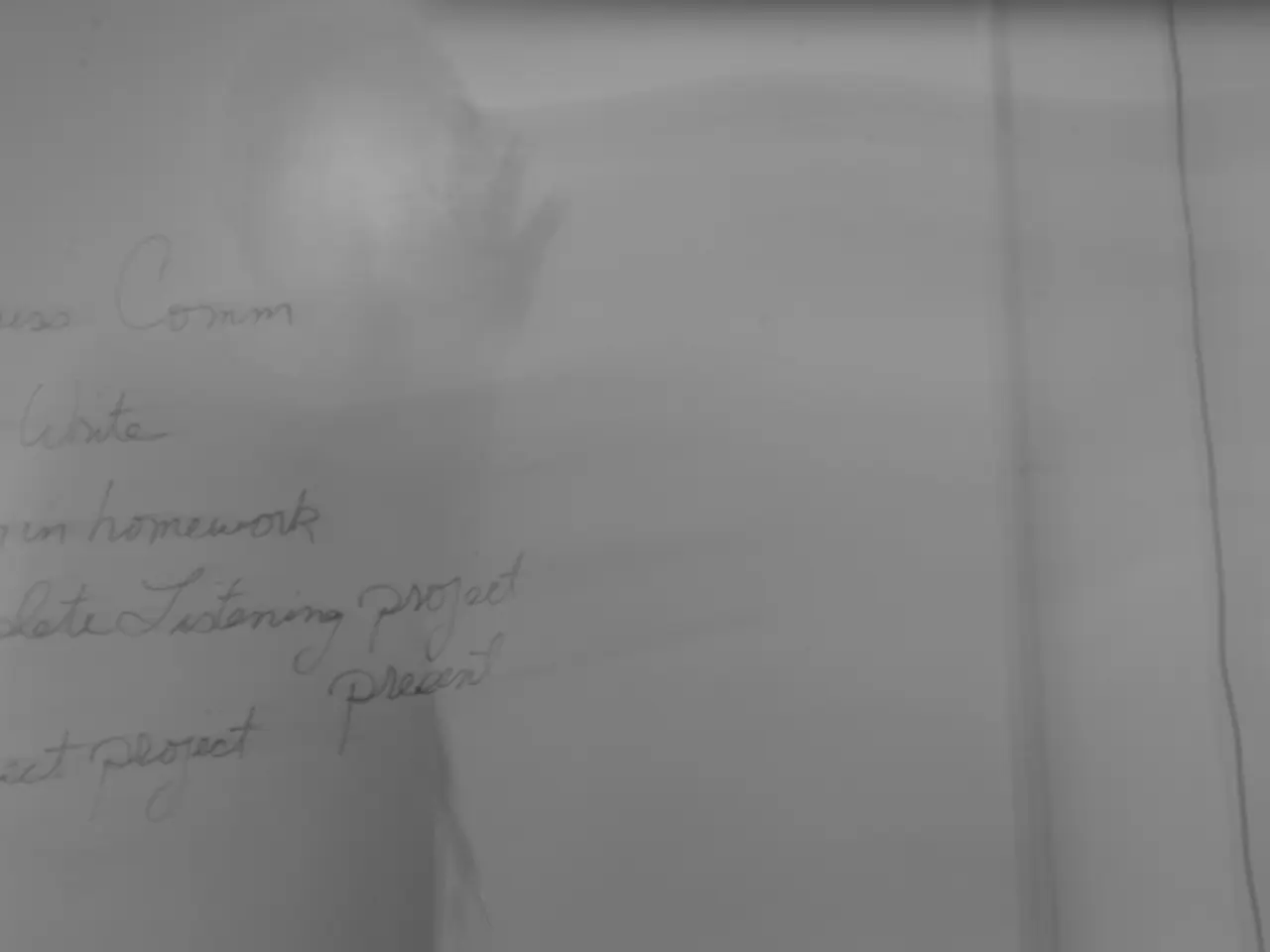A Clash of Economics: Trump's Tariffs and the Federal Reserve
U.S. President Trump's Tariffs Take Center Stage in Fed's Decision-Making Process - U.S. President Trump's Taxes on Imports Cast Shadow Over the Federal Reserve Decisions
In the heart of the United States' economic scene, President Donald Trump's tariffs have become a contentious issue for the Federal Reserve. The central bank is grappling with the challenge of maintaining a stable labor market and curbing inflation in the world's largest economy, all while Trump insists that his tariffs will not escalate consumer prices and will boost the economy.
Powell's Predictions:
Federal Reserve Chair Jerome Powell isn't holding back his concerns. He's clear that the tariffs will drive up inflation and weigh on economic growth. He reasons, "Everyone I know is forecasting a significant increase in inflation in the coming months due to tariffs because someone has to pay for them."
The Tariff Toll:
According to Powell, the toll of tariffs is unavoidable and depends on their level. He’s cautious that higher tariffs will push prices up and hinder economic expansion. The tariffs on steel and aluminum, for instance, have soared from 25% to 50%, directly escalating costs for industries heavily reliant on these materials. As these additional costs trickle down the supply chain, they eventually translate into higher consumer prices, fuelling broader inflationary pressures.
A Brush with Uncertainty:
Remarkably, the Fed kept the benchmark interest rate steady, despite Trump's persistent pleas for an easy credit. The rate remains within the range of 4.25 to 4.5 percent. The uncertainty surrounding the economic outlook is, perhaps, the reason for this decision, as the Fed stated in its statement.
The Interest Rate Lever:
The Federal Reserve uses the interest rate as its primary tool for achieving its central objectives - keeping inflation in check and curtailing unemployment. The rate dictates the rate at which commercial banks can borrow from the central bank, which, in turn, influences the fees charged to consumers and businesses, such as mortgages, auto loans, and other financing.
A Projection for Slower Growth:
Owing to the tariffs, the Fed now predicts slower economic growth this year, with a projected growth rate of 1.4 percent, a downward revision from its earlier forecast of 1.7 percent. The Fed also anticipates a higher inflation rate of 3.0 percent, as compared to its earlier projection of 2.7 percent in March.
The President's Perspective:
Though the independence of the Federal Reserve is constitutionally guaranteed, this doesn't deter Trump from his demands for lower interest rates to further stimulate the economy. He often criticizes Powell, calling him a "fool" and "stupid," and even suggests the Fed adapt the ECB's rate-cutting strategy.
From the Fed's standpoint, the current economic conditions don't call for adjustments in the interest rate. The inflation rate is close to its target of 2 percent, and the labor market remains robust. Furthermore, the economic outlook is uncertain due to the impending tariffs.
Since taking office in January, Trump has imposed or threatened hefty tariffs on goods from various countries, making imports to the U.S. more expensive.
- Donald Trump
- Federal Reserve
- Tariffs
- Jerome Powell
- Inflation
- Central bank
- U.S. economy
- United States
- Labor market
- Federal Reserve System
- Republican
- Interest rate
Economic Analysts' Views
According to economic analysts and institutions, the tariff policies under President Trump are broadly viewed as inflationary and detrimental to U.S. economic growth. The tariffs serve as a hidden tax on imports, leading to higher consumer prices, and thus inflation. Furthermore, by raising costs for businesses and disrupting supply chains, tariffs tend to slow economic growth, reduce trade, and hamper investment and consumption. In particular, the Organization for Economic Cooperation and Development (OECD) projects that the U.S. GDP growth will slow dramatically, citing "rising trade costs" driven by tariffs as the primary causative factor.
- Economic analysts and institutions, including the Organization for Economic Cooperation and Development (OECD), view the tariff policies under President Trump as inflational and detrimental to the U.S. economy, as they serve as hidden taxes on imports, leading to higher consumer prices and inflation.
- The tariffs also tend to slow economic growth by raising costs for businesses, disrupting supply chains, and hampering investment and consumption.
- Furthermore, these tariffs, according to economic analysts, are likely to reduce trade and indirectly affect employment policy within the European Countries and global businesses due to the disruptions in the business-legislation realm and policy-and-legislation landscape.




